This is based on a recent Boston-Shanghai nonstop round-trip, about 14 hours each way on a Boeing 787.
Airfare was only $650 round-trip, including up to two checked bags, a sign of the lack of demand in November (probably the ideal time for a tourist visit to Shanghai due to moderate weather and minimal rain), and the plane turned out to be only 2/3rds full. (incredibly boring video, intended for toddlers, of the plane pulling in to park)
Hainan has a higher staff-to-passenger ratio at the check-in counters. Even though I arrived right at the magic 2-hour-prior peak moment, the typical 45-minute line to check in was absent. A helpful Chinese woman whose English was good checked me in and had me on my way to security within a few minutes of arriving at the curb.
Massport invested heavily in signs promoting free WiFi at Logan:
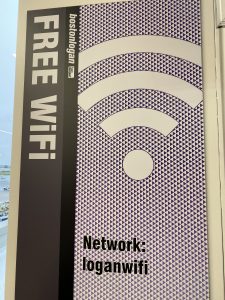
… and then did the usual American-quality job of provisioning to ISDN speeds:

(See below for how this is 1/100th the speed of WiFi at Shanghai Pudong Airport.)
Thanks to the plane being only 2/3rds full, boarding was a lot faster than less stressful than a typical JetBlue or United attempt to board a narrow-body plane with fewer passengers.
The ordinary economy-class seats are arranged as 3-3-3 and have a reasonable amount of legroom (I’m 6′ tall) and a reasonable recline. I had a whole row of three seats to myself (“poor man’s business class”). Even if the plane had been full, though, it would have been vastly better than sitting in coach on a U.S. carrier. More than 90 percent of the customers are Chinese, so the probability of sitting next to a tall obese person would have been low and, as mentioned above, the legroom is at least as good as on JetBlue and much better than what the typical U.S. carrier provides in coach. Chinese kids are generally cheerful, so the chance of being near a screaming child is also lower than on a carrier catering to Western customers.
The flight attendants begin the flight by standing solemnly near the front of each section and introducing themselves as a group, thanking passengers for entrusting them with this voyage, and expressing the hope that their service will bring us pleasure. They then bow to all of the passengers. All of the flight attendants appeared to be women in their 20s or 30s, elegantly attired in a Chinese-patterned dress. In other words, the people on both flights actually matched the flight attendants you might see in an ad for the airline. From a Hainan web page describing the uniforms designed by Laurence-Xu and introduced in 2017:

From the same web page:
At the same time as our introduction of the Rosy Clouds uniform line, Hainan Airlines has consulted with renowned make-up artist Mao Geping to create a new look that is both simple and sophisticated. This new style is fresh and clean, enhancing the natural beauty that is already there rather than garishly painting over it. The sandy color of the women’s lipstick echoes the colors of the cabin interior. The pearlescent eye shadow not only matches the blue and grays of the uniform but also the fabric on the seats. Our beautiful new uniforms paired with the elegant women who wear them creates a new professional image of the Hainan Airlines flight attendants.
Service is much more soft-spoken and elegant than in the U.S. They do use carts for serving meals from trays, but otherwise everything is done with trays including trash collection. Apparently a Chinese customer does not want to see a flight attendant carrying a trash bag down the aisle. Every passenger is provided with a kit containing a sleep mask, ear plugs, toothbrush and toothpaste, and travel socks. Headphones are offered at no charge.
The plane was configured to deliver WiFi Internet, but the service was not available on our flight. I am not sure how it would have worked given a route that goes over Greenland, Svalbard, and Siberia.
Food service is calibrated to the non-obese and the sleeping: a light dinner, some self-service snacks, sandwiches starting after about 6 hours, and a medium-sized breakfast. Pitchers of green and black tea are prepared for the Chinese customers. A request for coffee yields a cup made with freeze-dried instant coffee. If you’re planning to stay up for the flight and are accustomed to the American diet, it would make sense to bring fruit, nuts, carrot sticks, and cold-brew coffee.
I was expecting the Boeing 787 to be a whole new world of comfort and quiet and the noise control for a composite fuselage does seem impressive. However, the net result does not seem dramatically quieter than the front portion of a Boeing 737, for example (I neglected to bring my sound level meter, and the iOS ones are junk). Cabin pressure at 33,000′ was 4,650′ according to ForeFlight (3.8 psi versus 12.4 psi, for a differential of 8.6 (compare to 7.8 max differential on a Boeing 737, so I am not sure what all of the fuss is about)). Walking up and down the aisle it is plain that there is a “extra noise zone” near the back of the wing and therefore the engine exhaust. Try to avoid a seat around row 46. Seats farther back were actually quieter.
Seatback entertainment offers at least 100 movies and an awesome “3D Airshow” from Panasonic Avionics, much better than anything I have experienced on a U.S. or European carrier (video of the system’s animation of our route). There are power outlets (compatible with U.S. plugs as well as European) and USB A outlets for all of the economy seats.
I had thought that the weather over the Arctic tended to be smooth, but we hit some turbulence over Greenland at 33,000′ and experienced at least a few bumps for about 1 hour out of 12+. Everything in China was kept a bit warmer than in the U.S. and the Boeing 787 was no exception. I was comfortable in a T-shirt and jeans, but consider packing shorts to change into during the flight.
Arrival in Shanghai involves escalators, hallways, and a train. The distances seem vast, on the same scale as Heathrow, but everything is new and shiny. We arrived at what would have seemed like a busy time, around 6 pm on a weekday, but clearing immigration required waiting behind just one other person and took just a couple of minutes. Unlike in the U.S., the folks who check passports and suitcases are not armed. In fact, I did not see anyone in the Shanghai airport with a gun.
Apple Maps showed that the quickest way to central Shanghai was simply a taxi ($30 for a 45-minute drive despite the evening rush hour; note prices posted above baggage carousel), but I wanted to try the maglev (a fairly long walk from Terminal 2). If you’re on a budget, just take the Metro anywhere in the city straight from the airport for less than $1. That adds about 15 minutes compared to the maglev.
The return journey was equally smooth. My hotel was not right at a Metro station so I just jumped in a taxi for a 40-minute Sunday morning ride. Again arriving exactly two hours before the flight, I went from curb to bag check to passport control to the completion of security in about 10 minutes. China is a bit like Turkey in that passengers who can afford air travel are treated by the airport staff, even those involved with security, with a certain amount of deference and respect. As with the arrival, I did not see anyone carrying a gun. WiFi is fast, but the Great Firewall won’t let you reach Google, Facebook, or Wikipedia so you may end up sticking with roaming LTE (there does not seem to be any restriction on what can be accessed when roaming from a foreign country).

If you’re going to the G gates, accessible via train, keep in mind that there is more variety in shopping and food in the main D section of Terminal 2, i.e., before you get on the in-airport train. Most of the souvenirs that you’d want to buy, including fine silks and hand-made fans, are available at the airport and at roughly the same price as at a nice shop in the city.
Some items to note from the photos below: “Taiwan” is classified as something other than an “International” departure; the bathroom signage is pretty clear on what a “man”, “woman”, and “family” might look like. There are no “all-gender” restrooms. Starbucks and Burger King are available. See if you can find the special lounge for PHP programmers:
The flight back was just as good, but smoother and a bit longer. Again I had three seats to myself. The route stuck closer to the north coast of Alaska and took me back to Gjoa Haven and the heart of the Northwest Passage.
Since it had been around 70 degrees and dry every day in China I hadn’t bothered to check the weather for Boston. It turned out to be low IFR with a heavy rain cell right over Logan Airport during our scheduled arrival time. We were vectored around a bit and then, contrary to Malcolm Gladwell’s brilliant theories, the Hainan crew did a perfect smooth landing. I checked the METAR:
KBOS 241850Z 02025G37KT 3/4SM R04R/2000V5500FT +RA BR BKN009 OVC017 08/06 A2911 RMK AO2 PK WND 01037/1847 TWR VIS 1 1/2 P0018
That’s wind from the northeast (020) at 25 knots gusting 37 with 3/4 statute miles of visibility (everything else in aviation is generally nautical miles). Compare to 1/2 miles of visibility as the minimum for the standard instrument approach to Runway 4R at Boston. Runway visual range (“RVR”) was as low as 2000′, variable up to 5500′. Compare to 1200′ RVR as the minimum for a CAT II ILS 4R at Logan. There was heavy rain and a broken ceiling of clouds at 900′ above the surface (compare to 200′ for the minimum on an ordinary ILS approach to 4R). Temperature 8C, dewpoint 6C.
For the non-Global Entry masses, the immigration lines were epic. Back in the Land of Freedom (TM), there were close to 100 government agents carrying guns in the immigration and customs area. The sluggishness of clearing people through immigration meant that baggage piled up on the carousel (passengers not having emerged in time to claim it). I saw more obese people in the 10 minutes after landing than during 10 days in China.
The good news for U.S. airlines is that it would be illegal for Hainan to operate U.S. domestic routes! Certainly this would be a preferred choice for an American consumer.
(Note that if you take Hainan to Shanghai and then need to connect to a flight from the second airport on the other side of the city need to connect across airports in Shanghai, there is a direct Metro line (2) that does this for $1. This should never be necessary since both airports are international and serve most destinations, but it would not be inconvenient or expensive.)
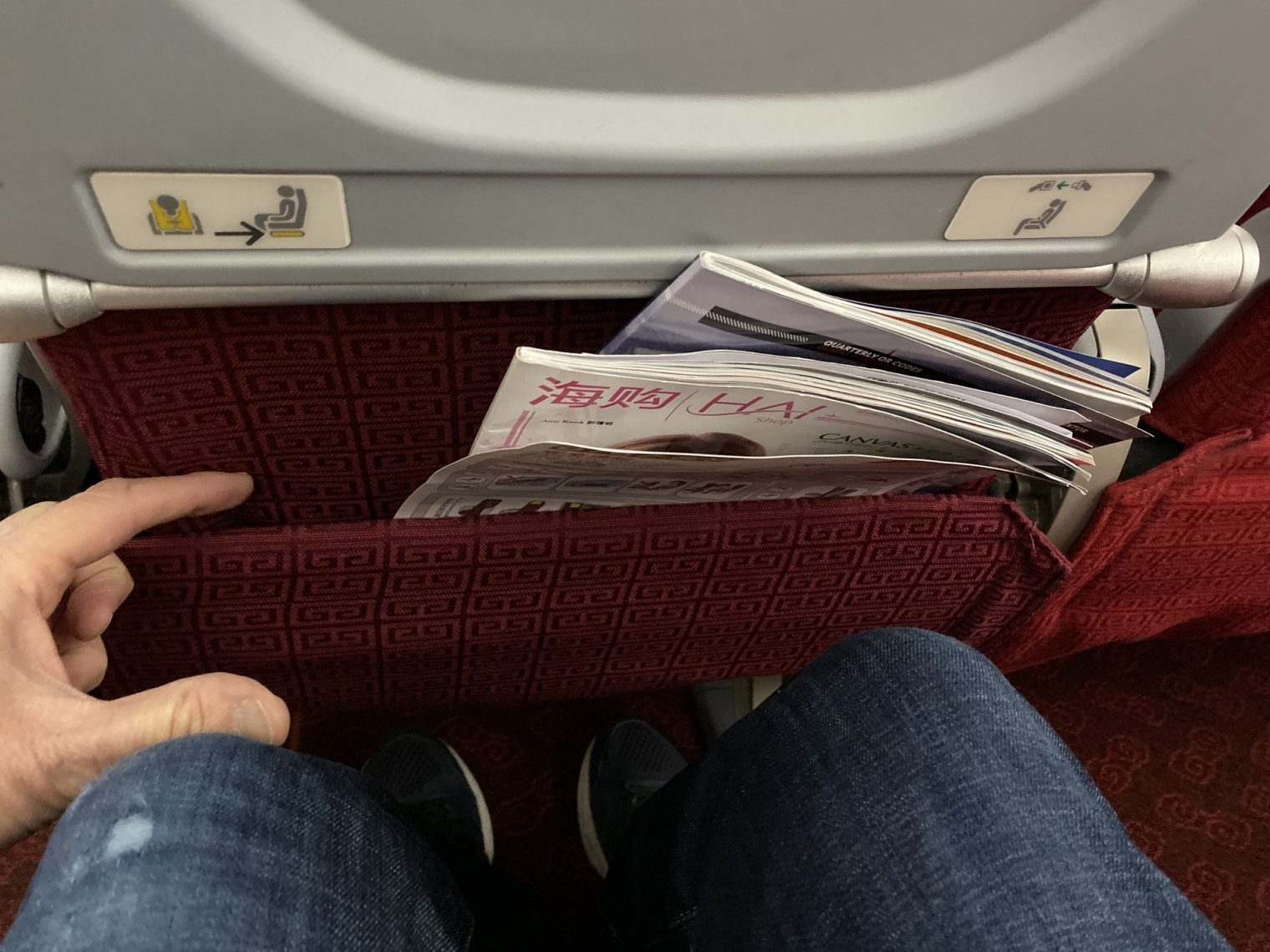
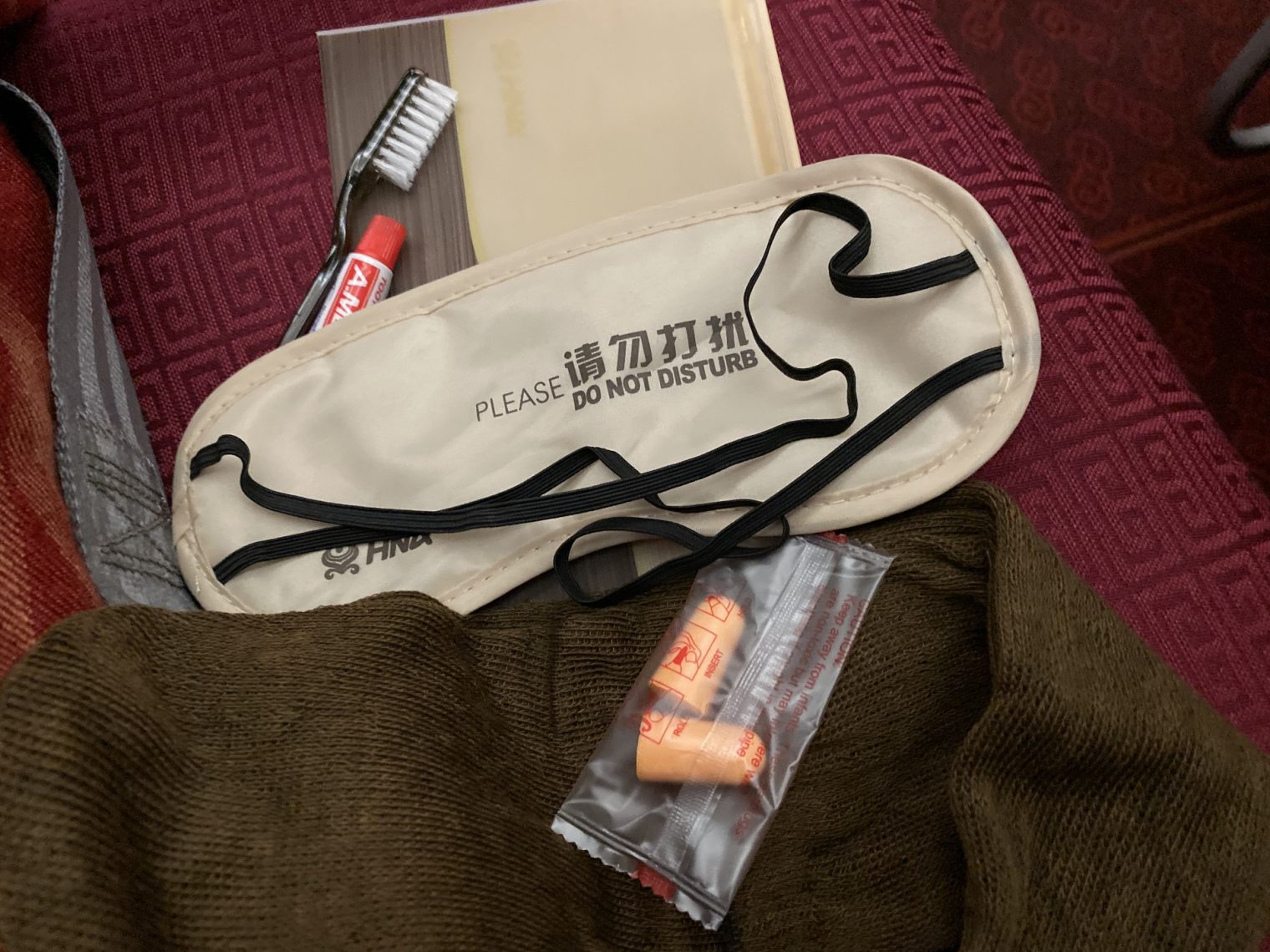
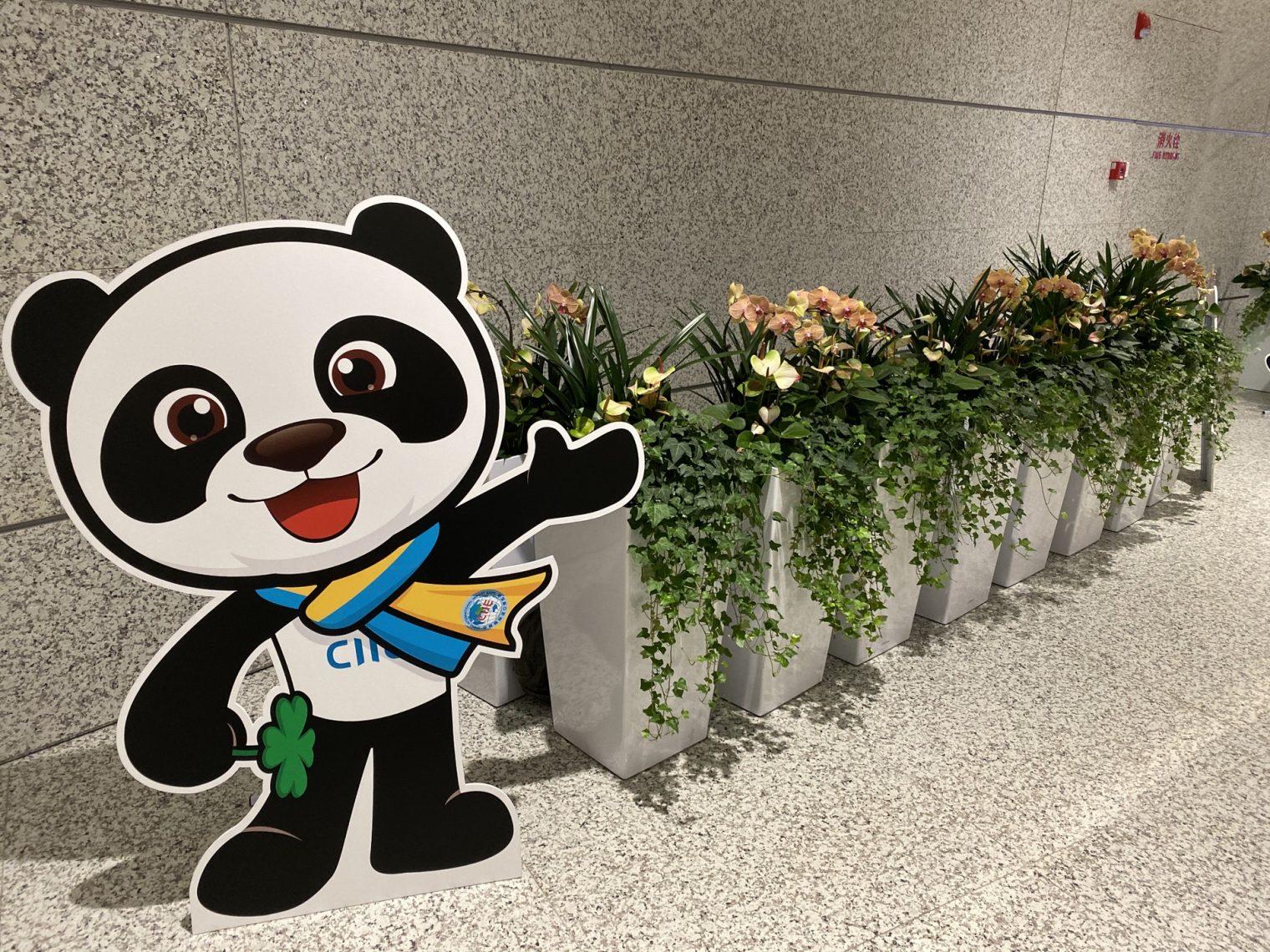
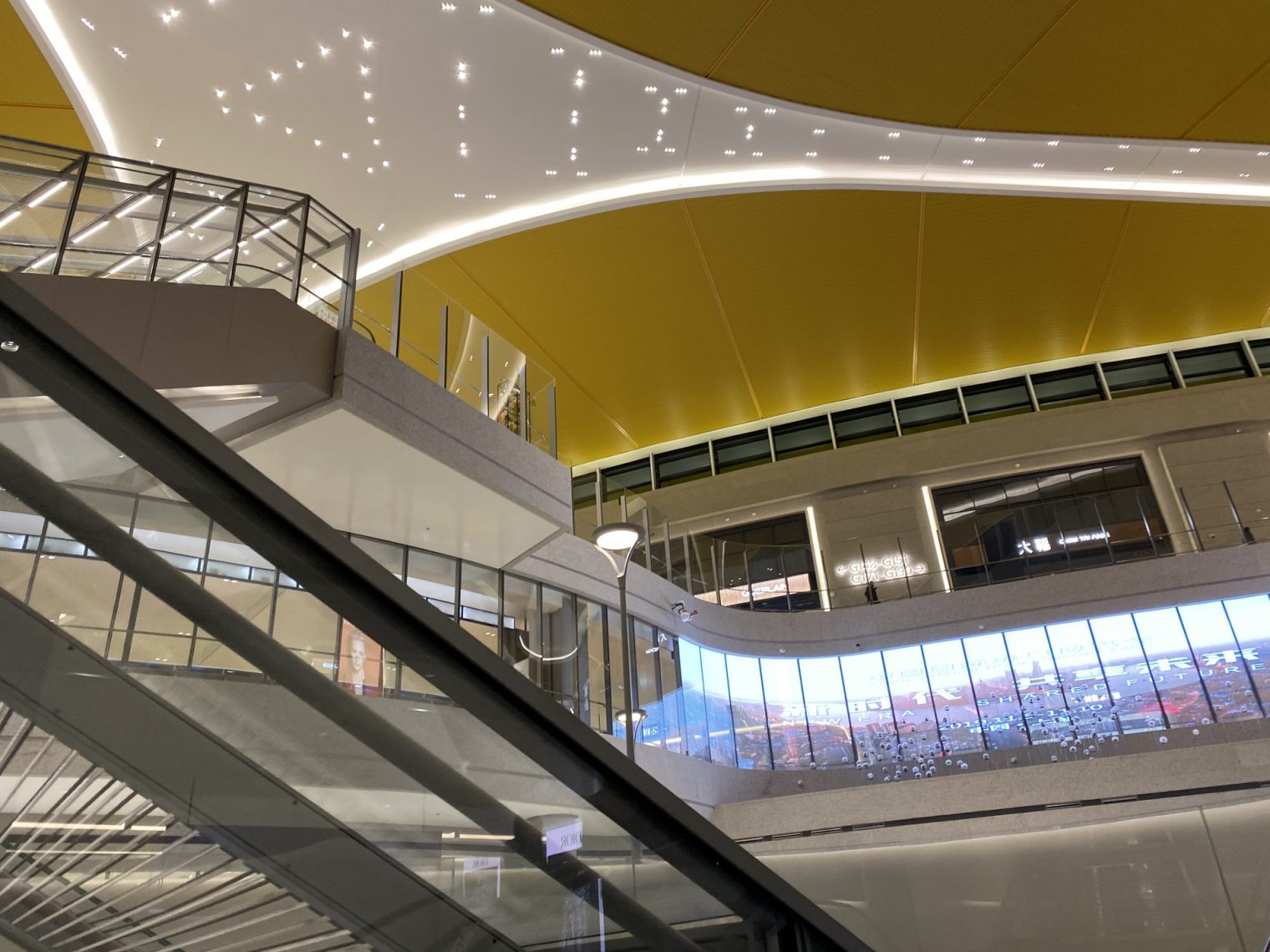

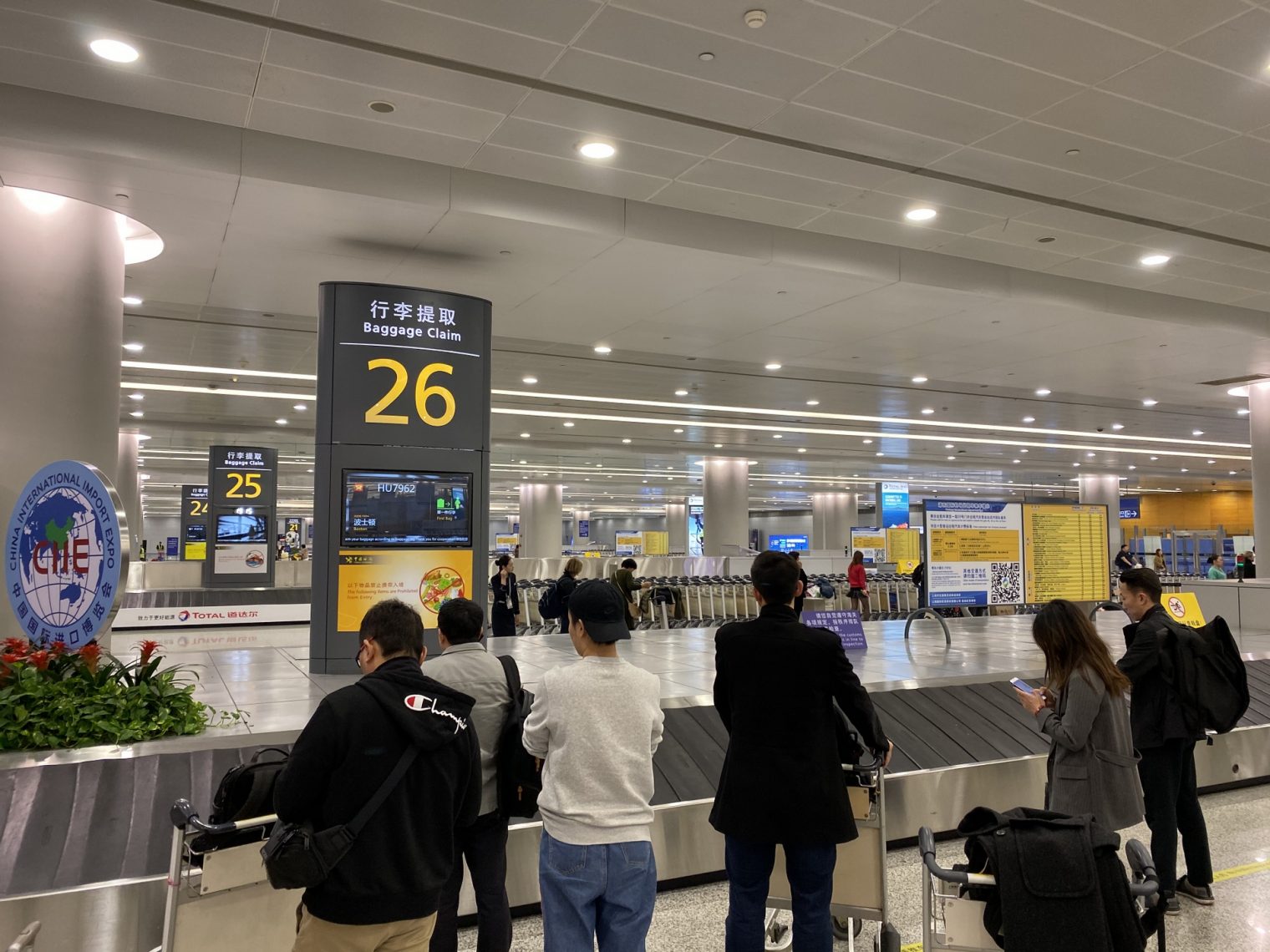
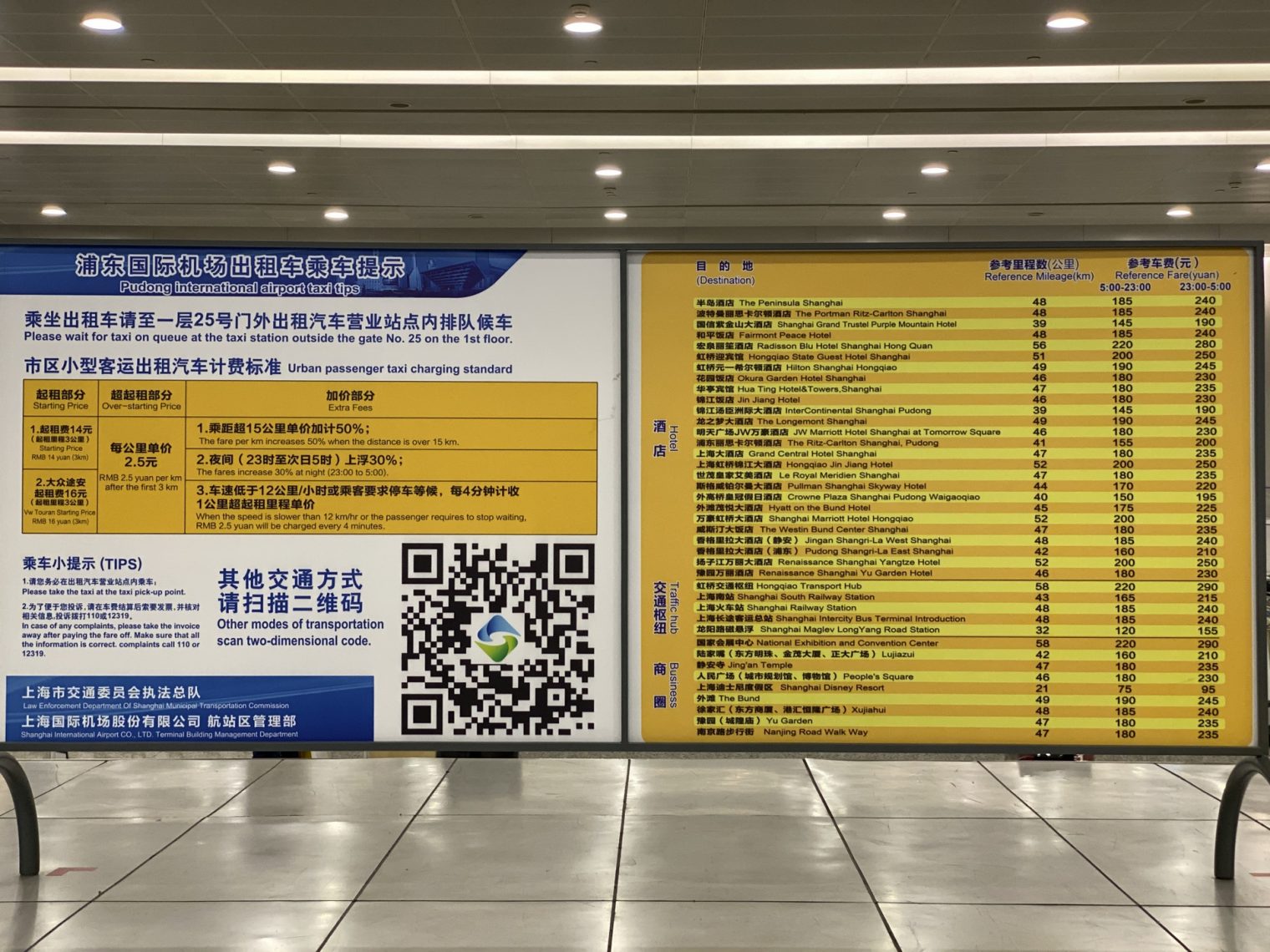
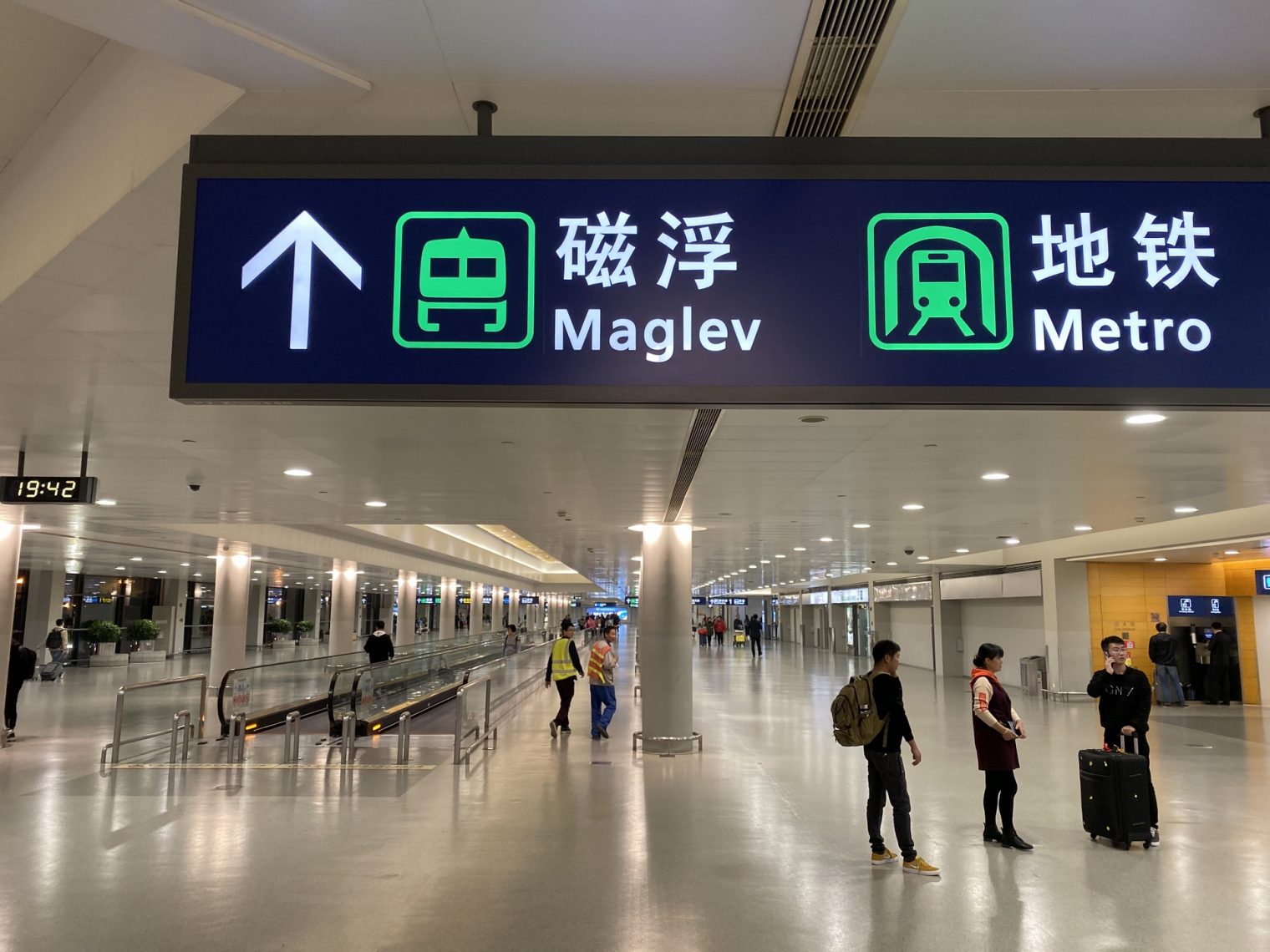
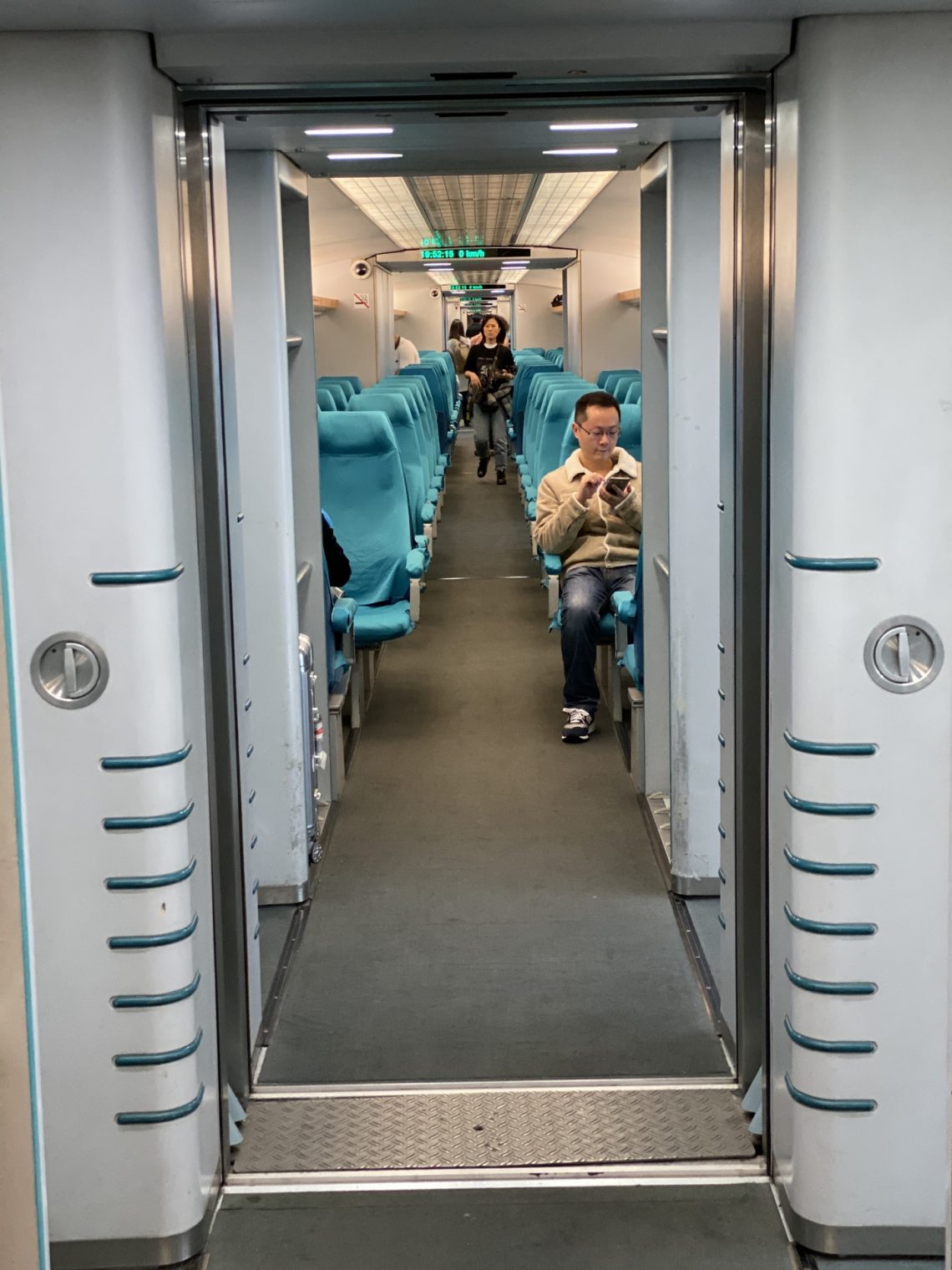
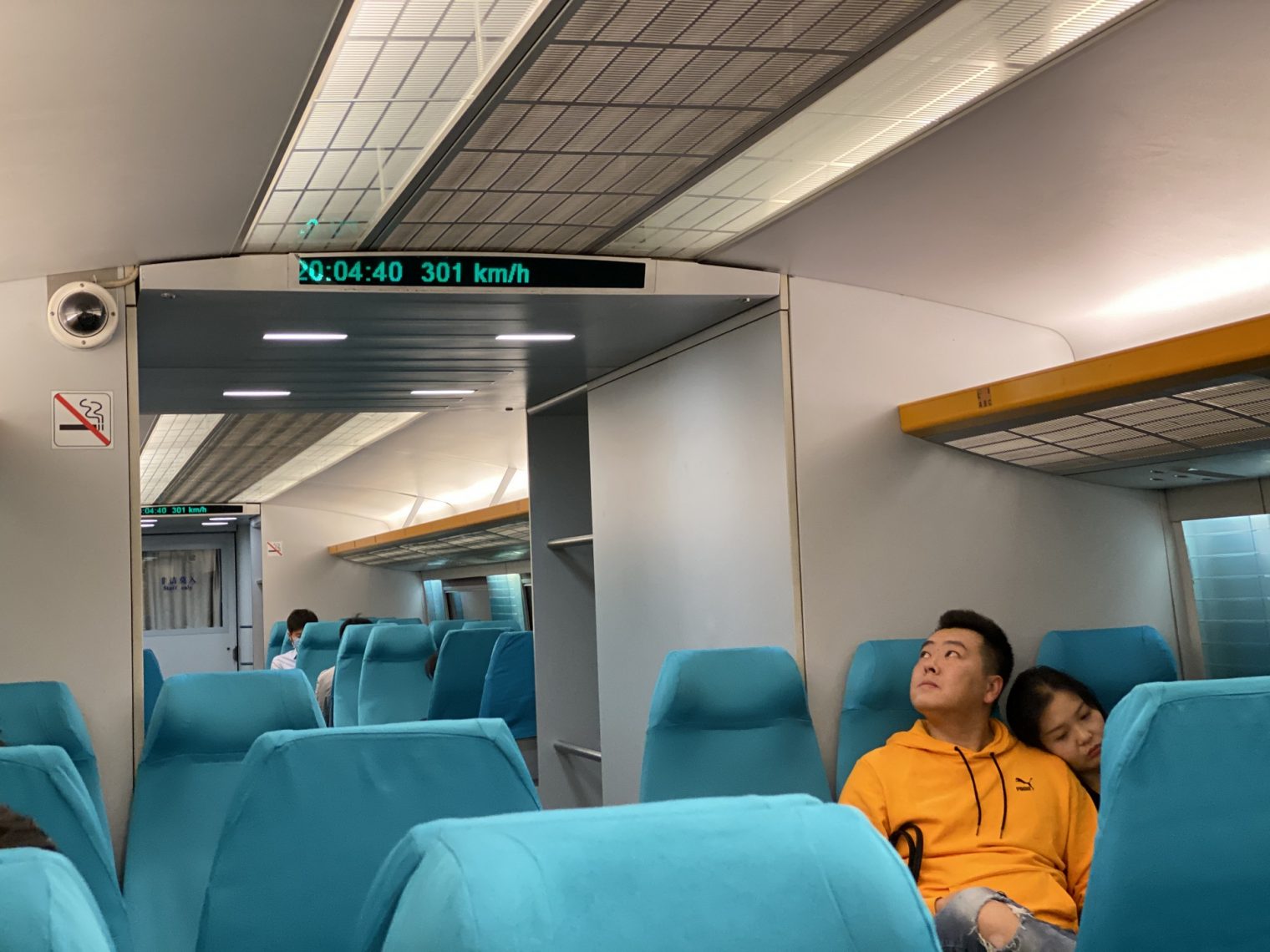

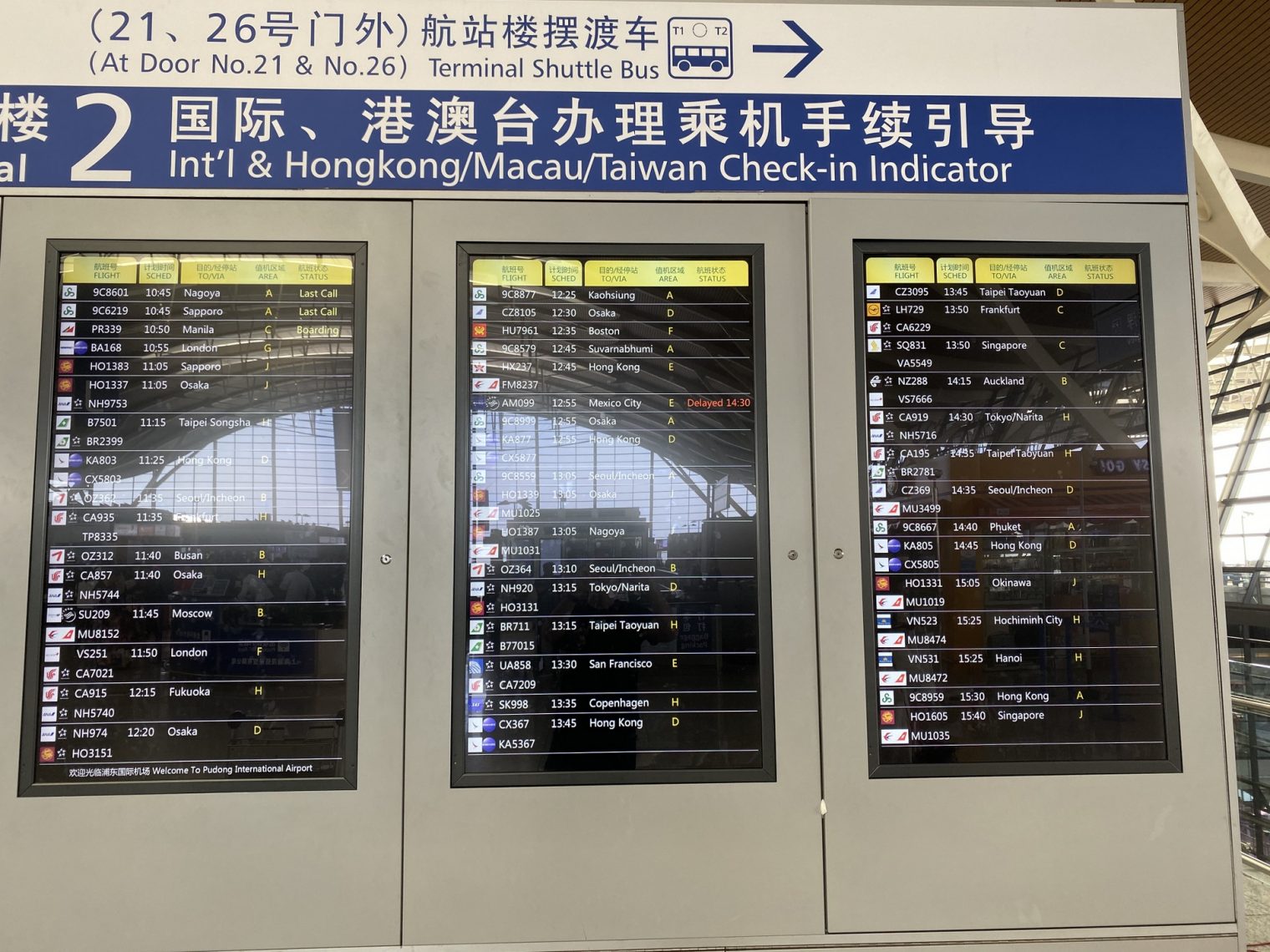


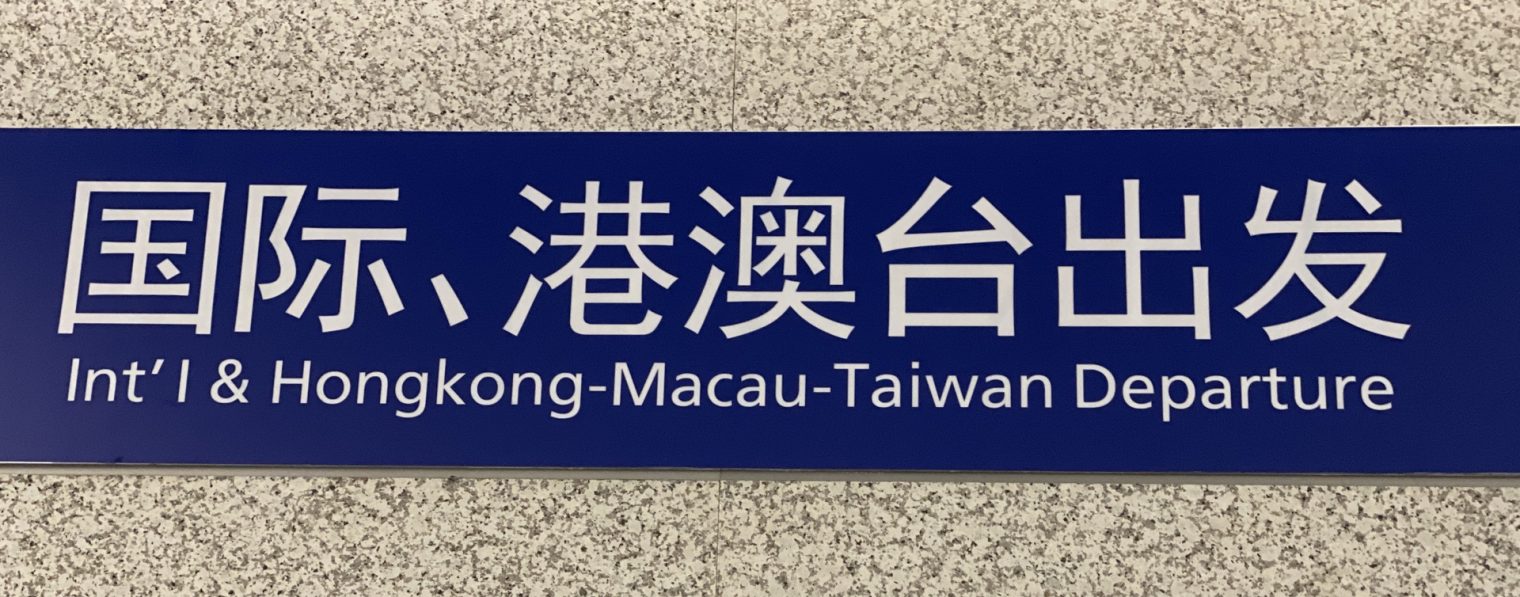
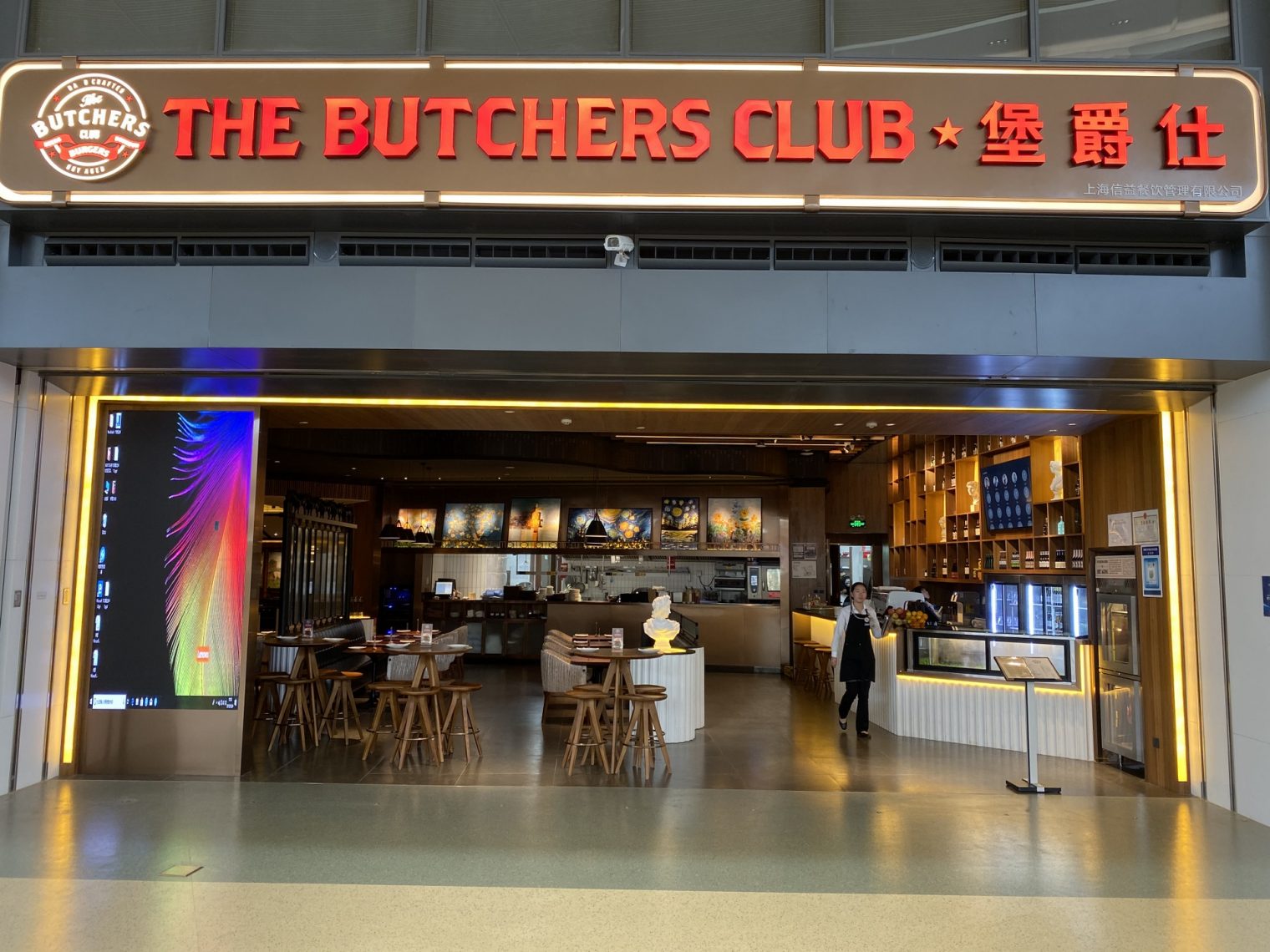
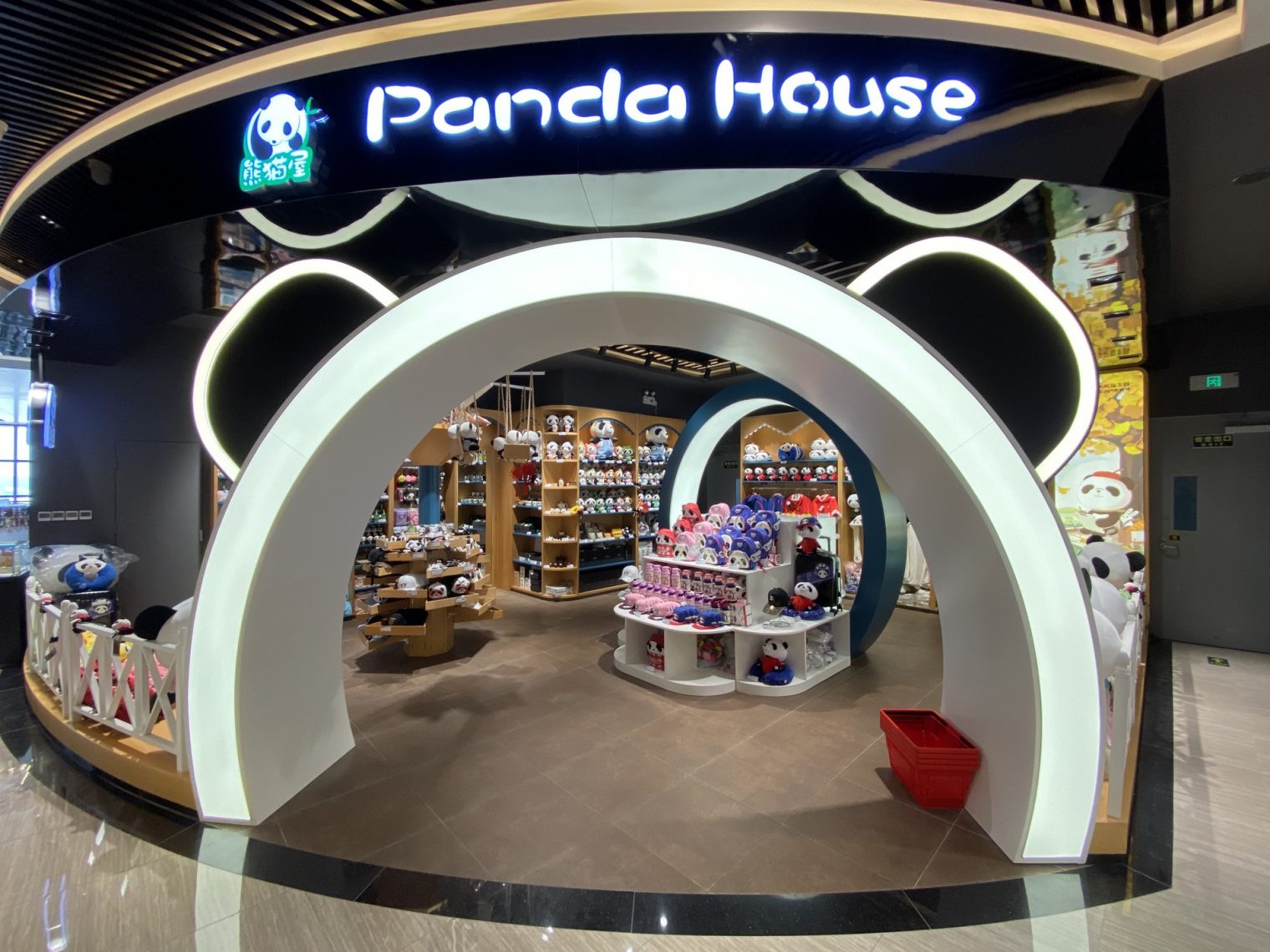
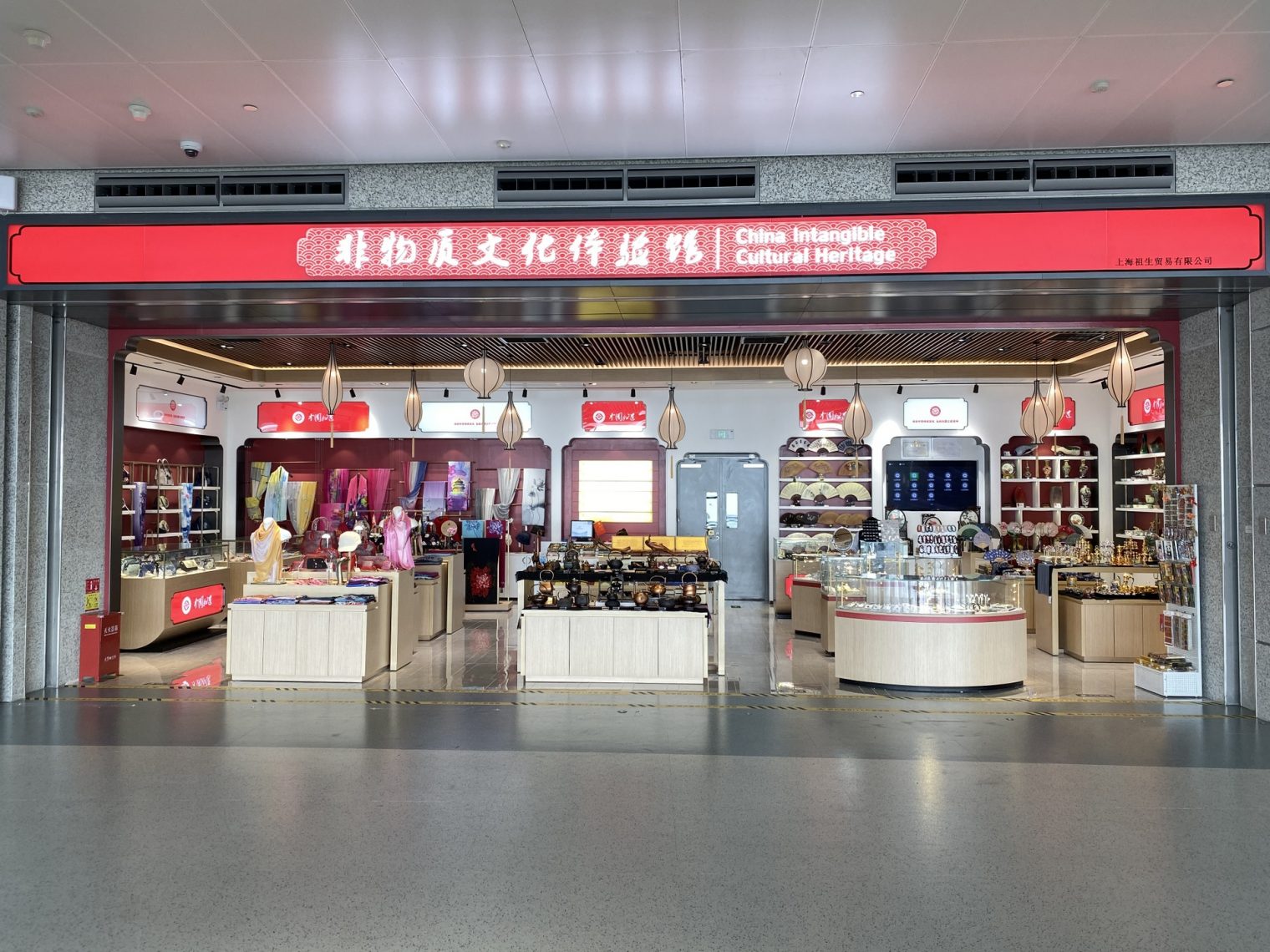
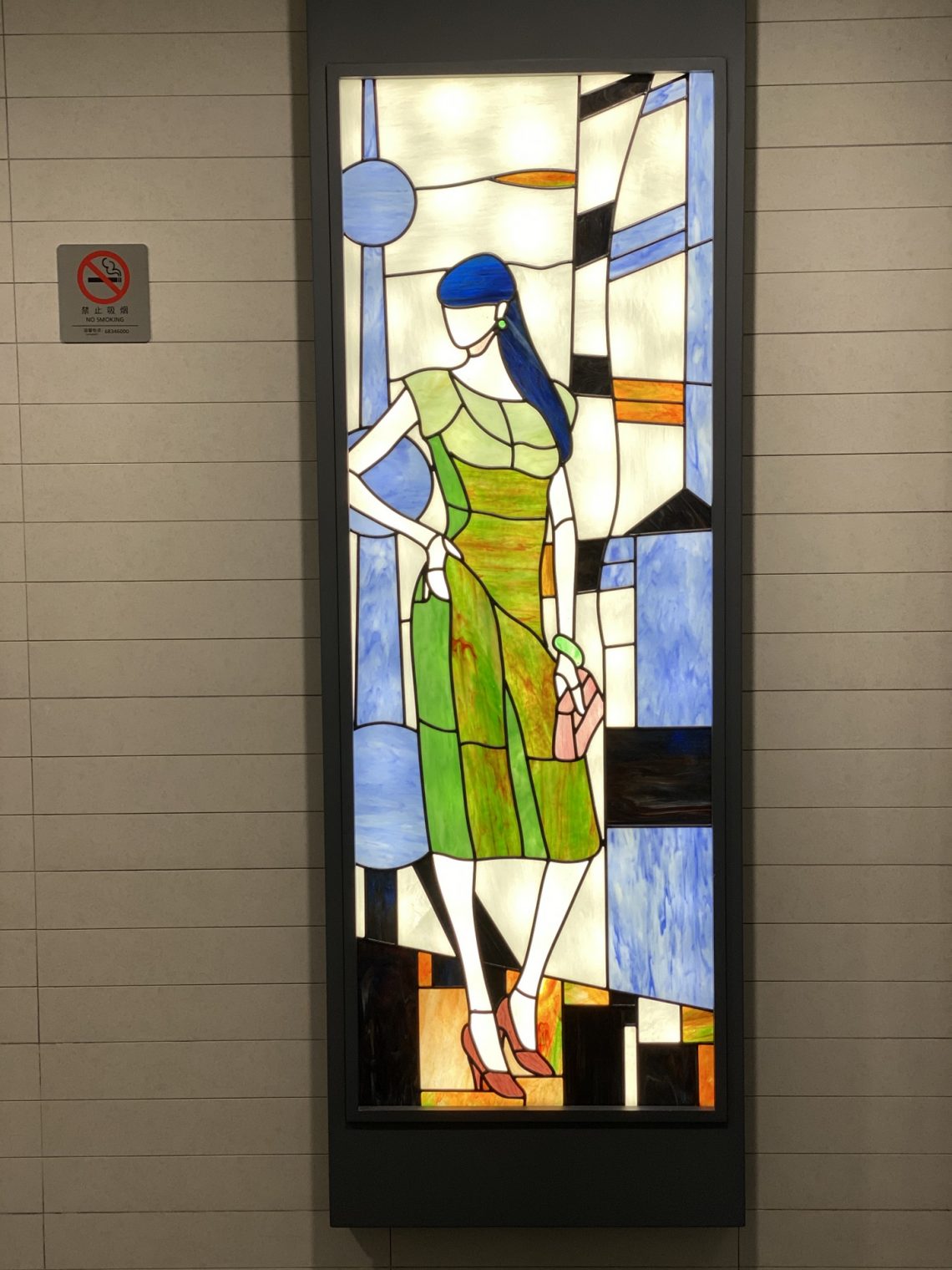
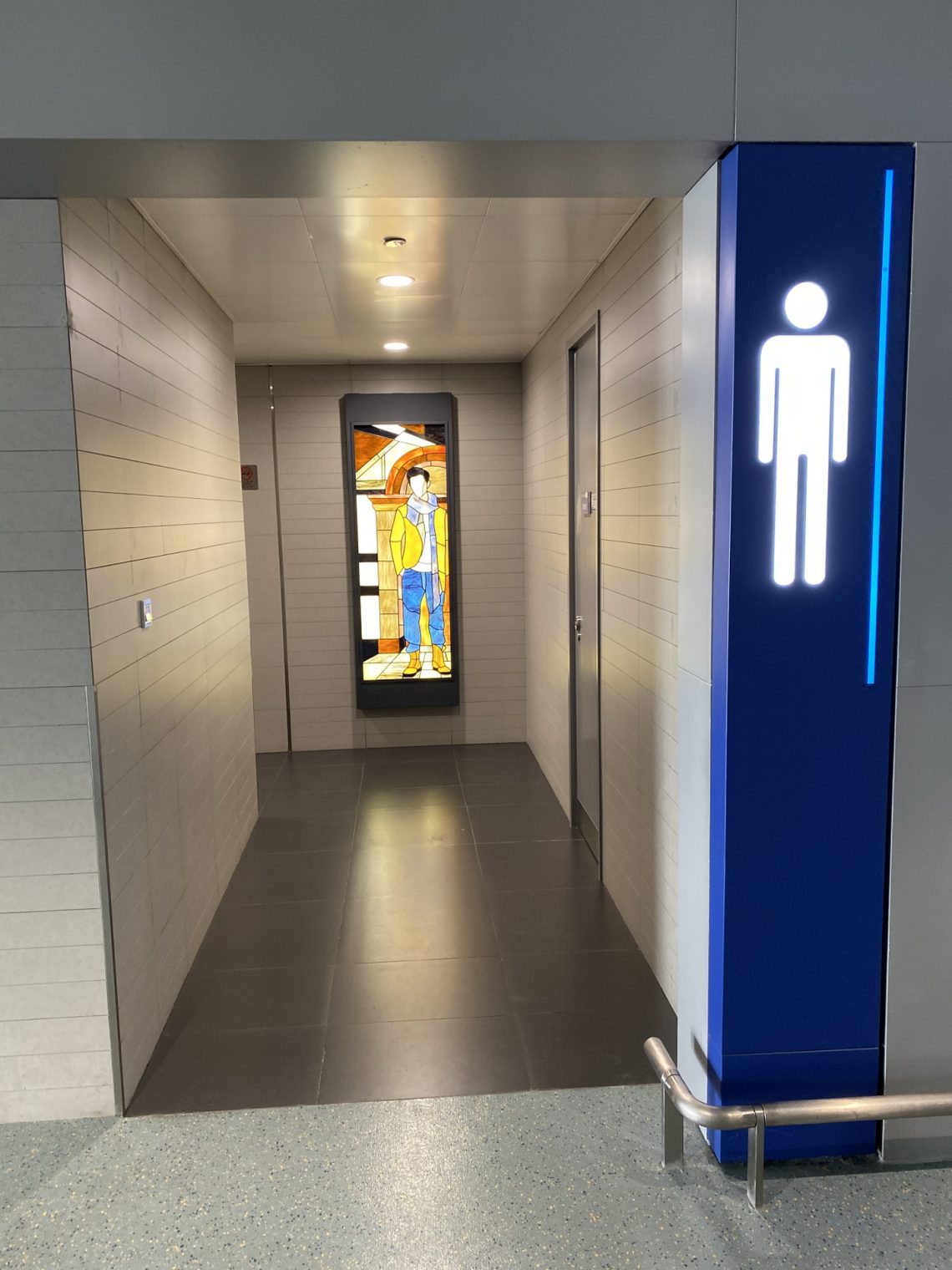

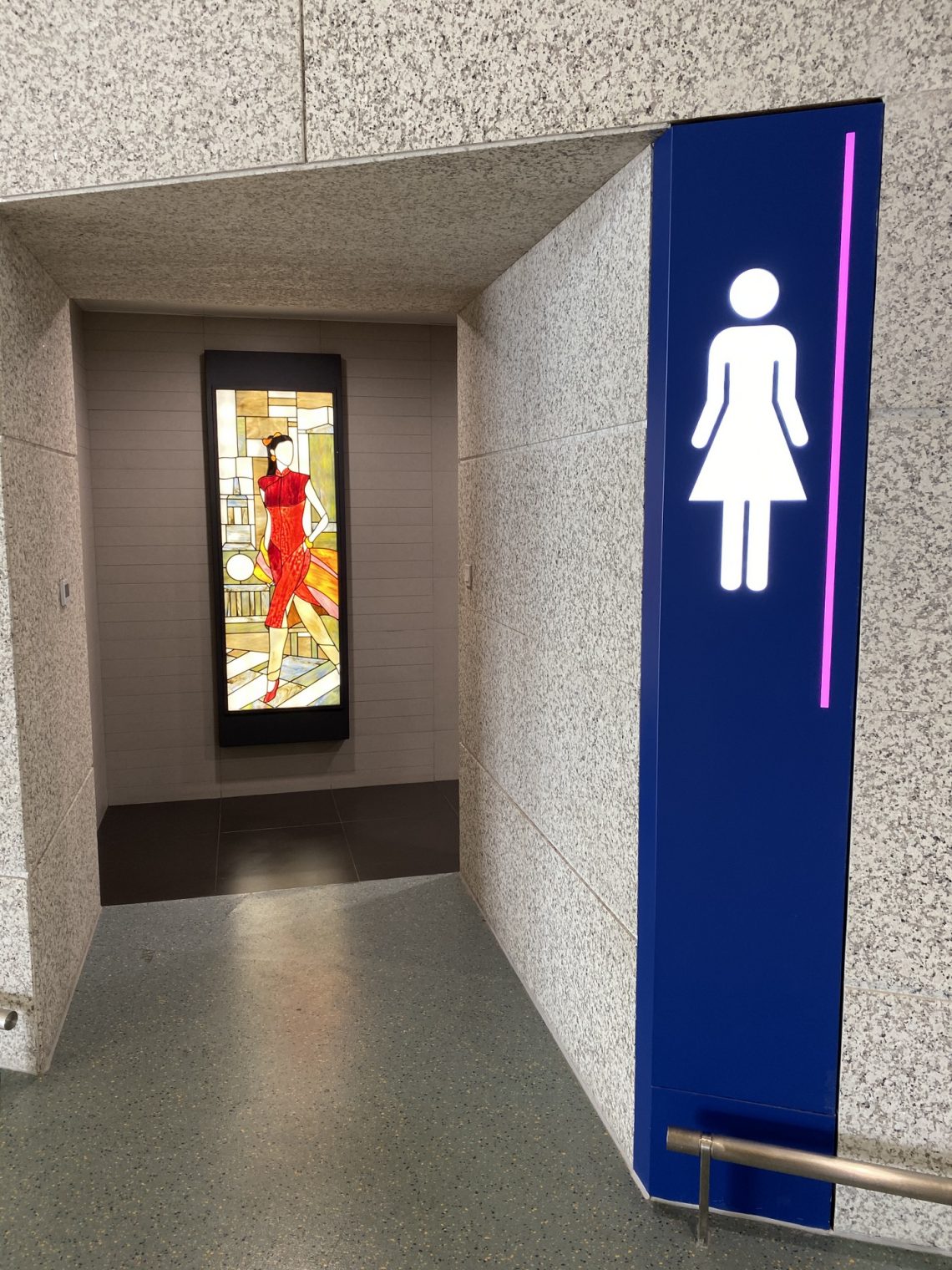
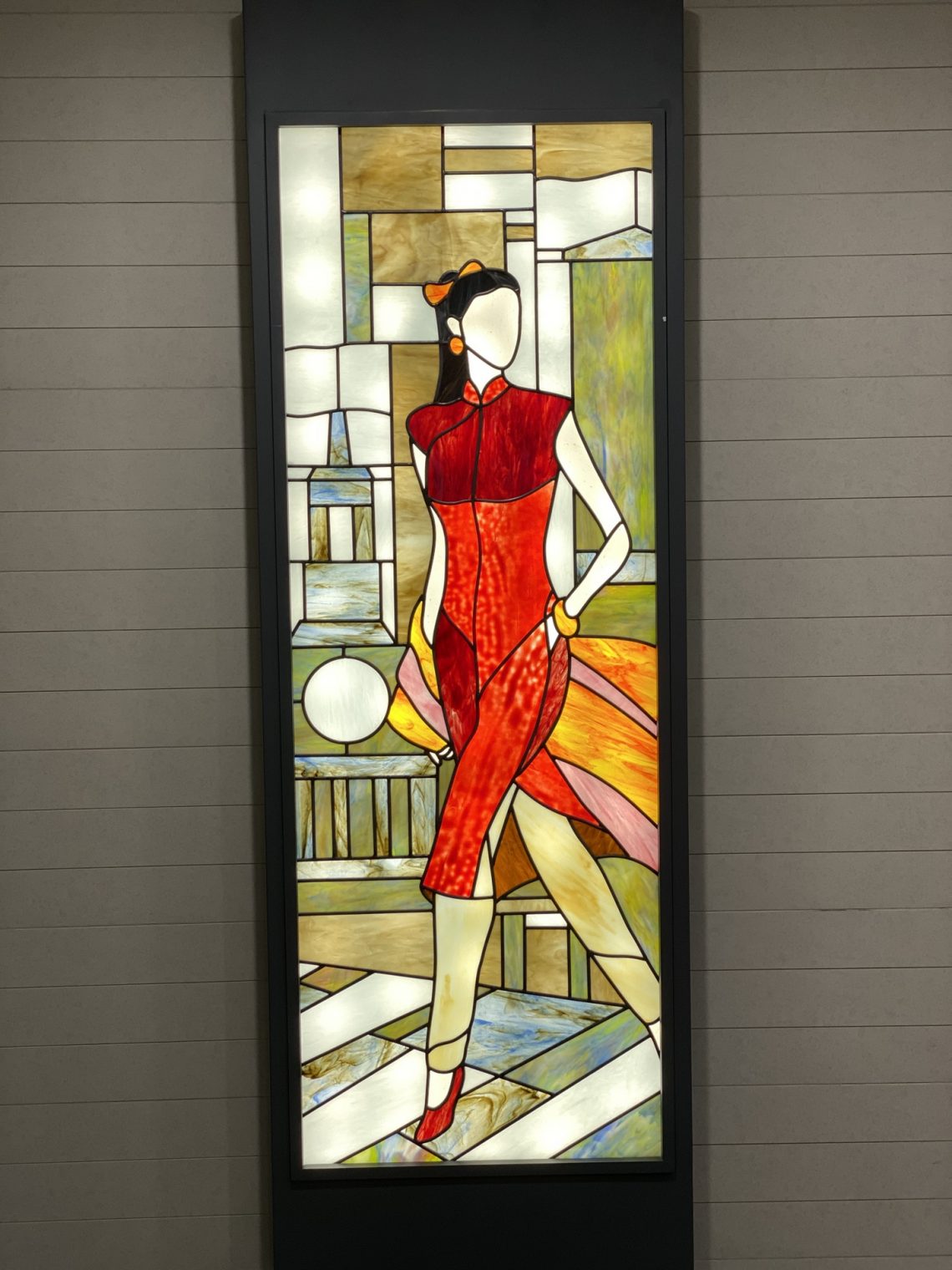

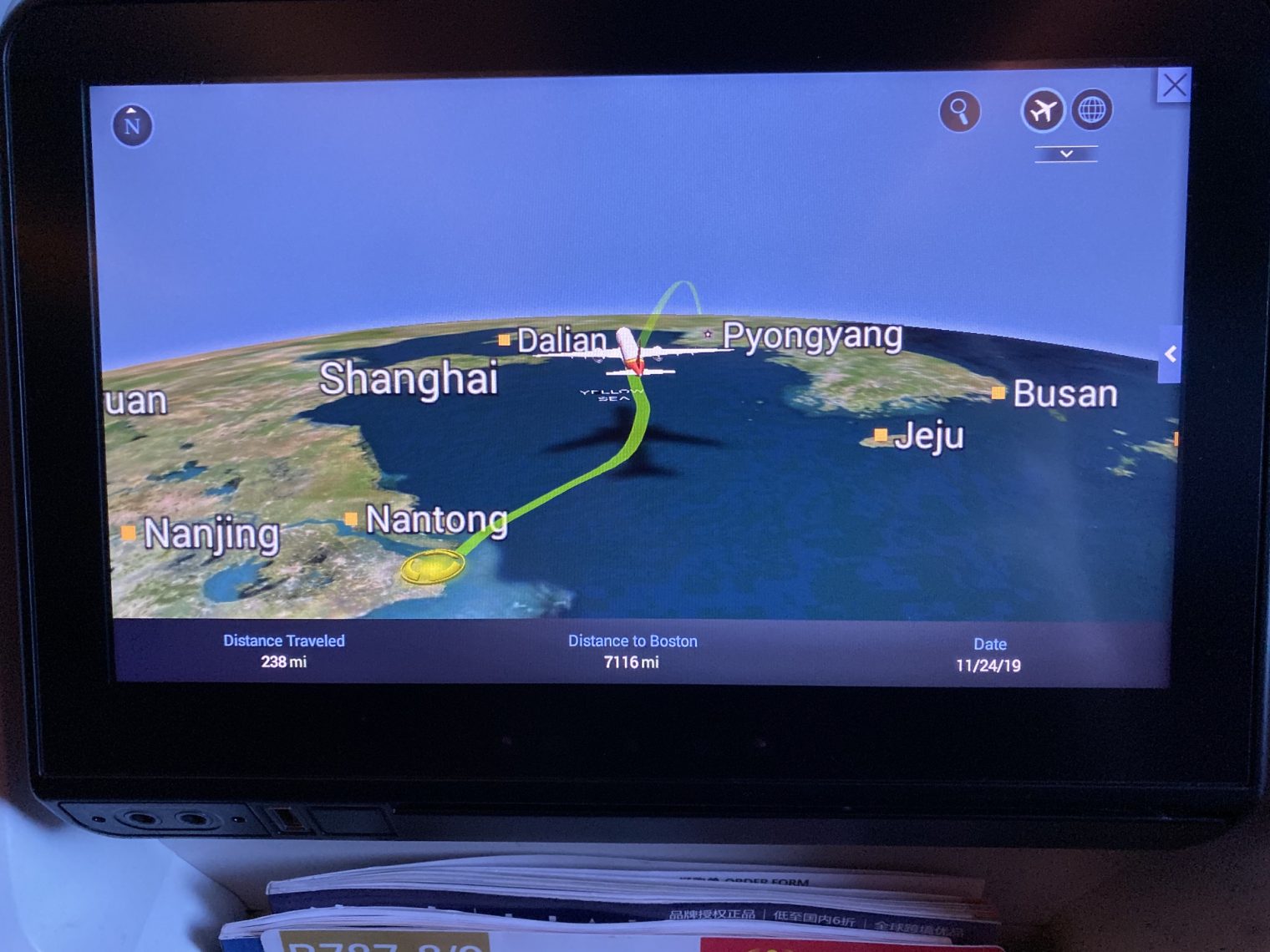
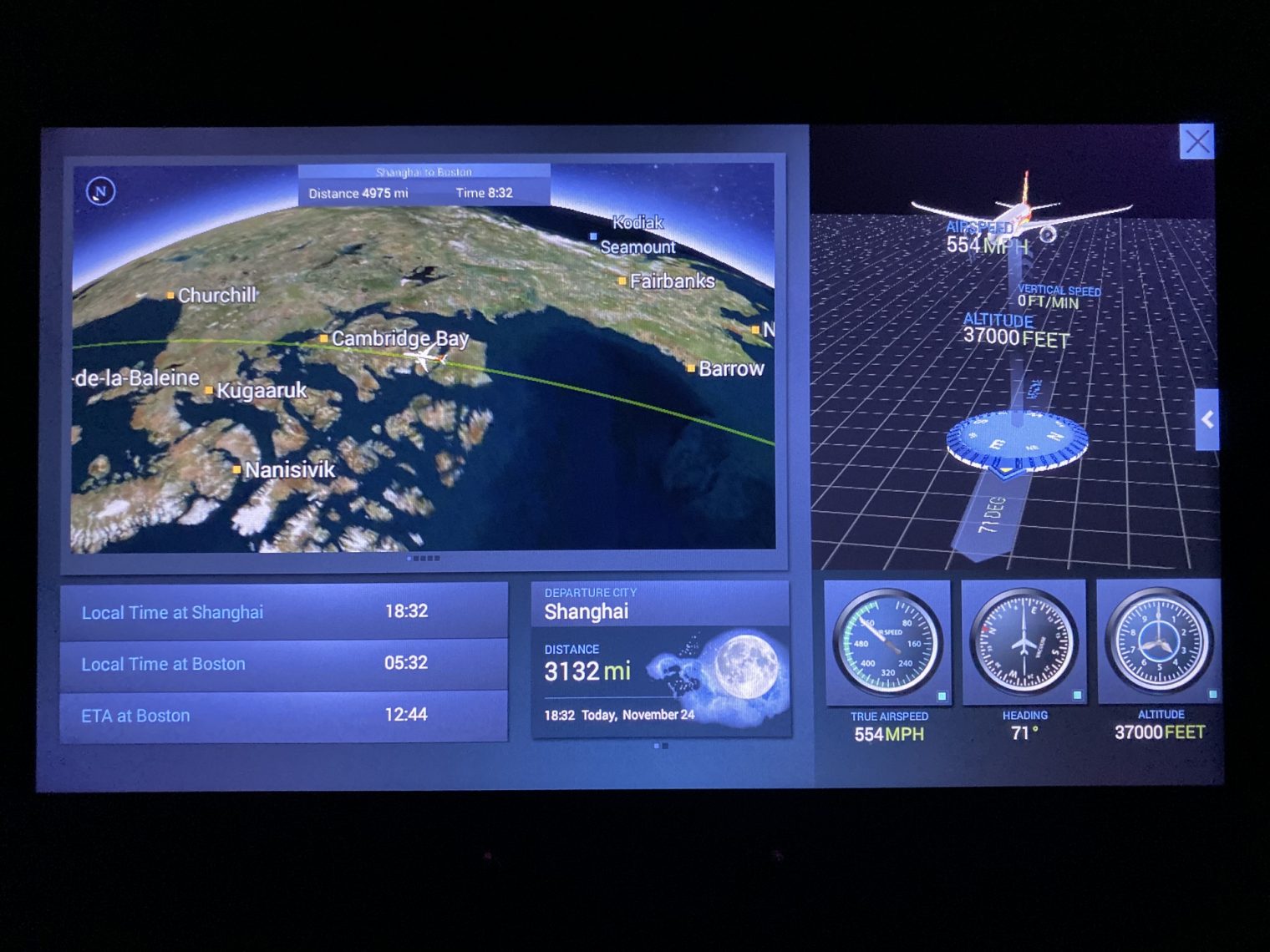
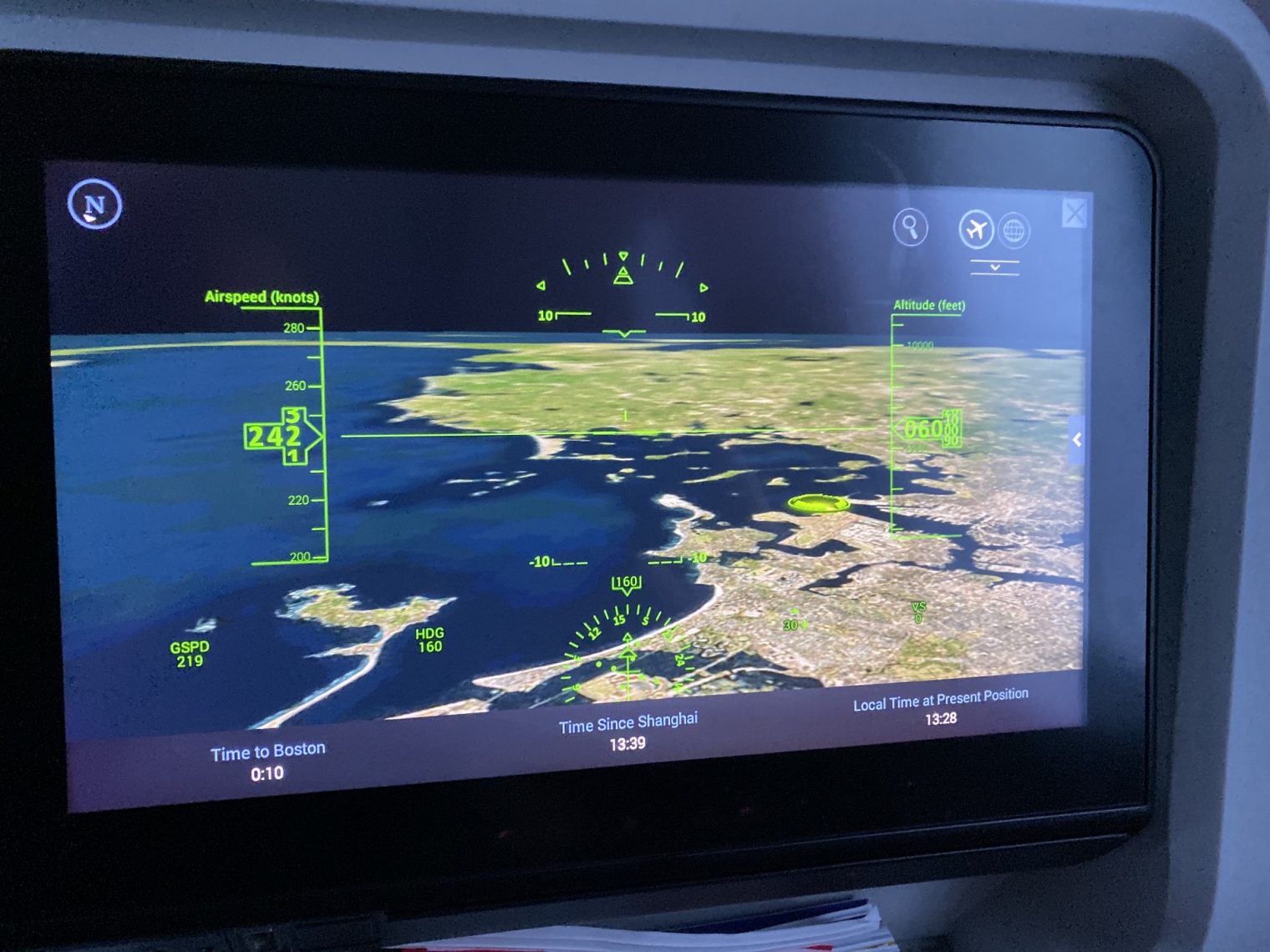
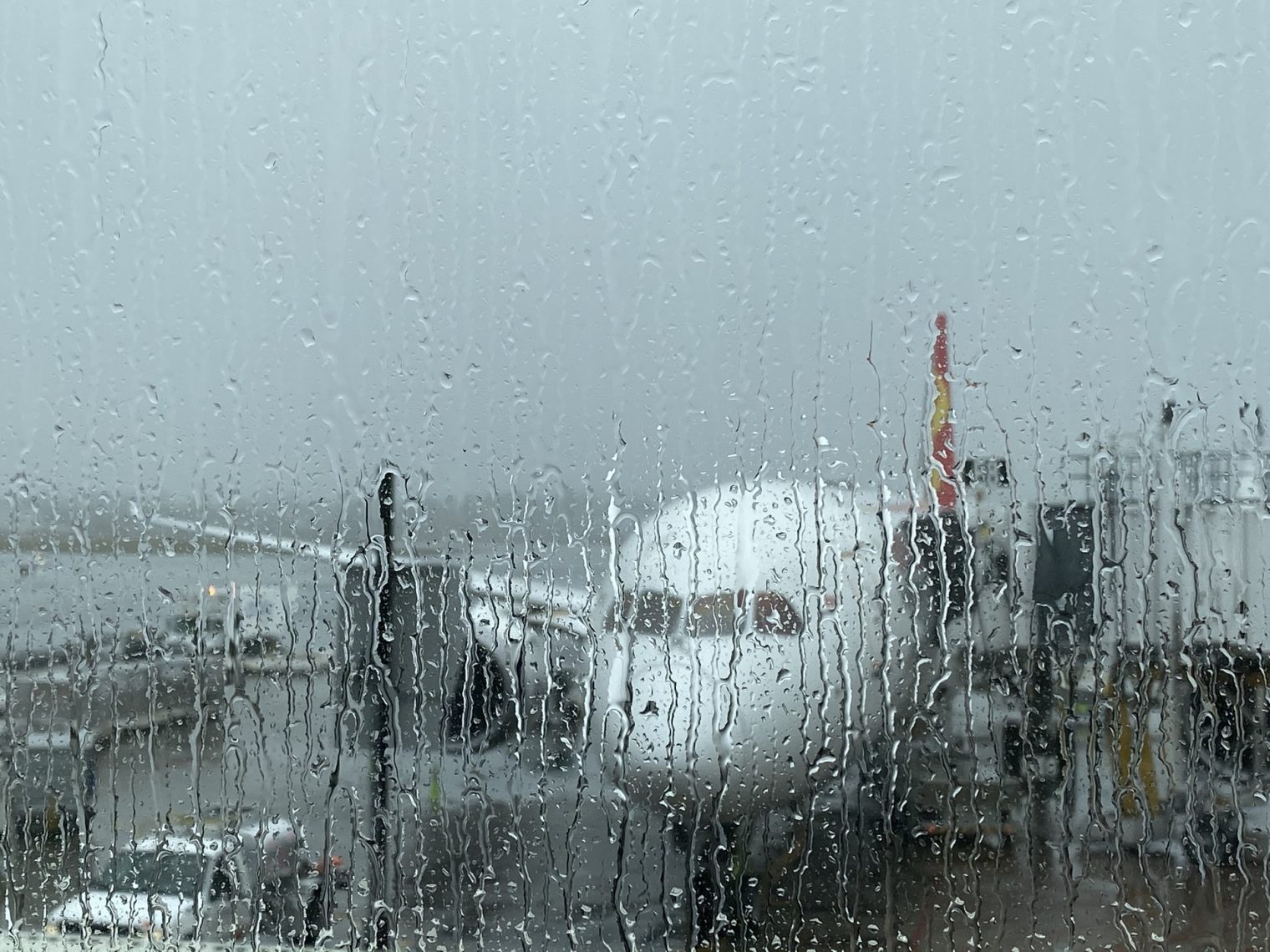
Something’s ironic about spending a fortune on a private plane, but not a penny more than necessary for a seat on a commercial plane. If US is to be truly open bordered & inclusive, it needs to adopt foreign gender roles & get rid of all these female presidential candidates.
Light airplanes and airline tickets are only loosely related items. Flying a Cirrus or a Cessna is about the challenge and experience, not about transportation (which can usually be done more efficiently in a Honda Accord).
Separately, the ticket on Hainan was not a budget-driven purchase. They are the only carrier with nonstop service from Boston (where I live) to Shanghai (where I’d been invited to go).
Flying Hainan Air is a calculated risk. It is bankrupt by all western definitions, but that has been the status for at least 2 years, and it keeps on flying. The prudent thing is to buy the airfare with credit card shortly before traveling, so you can dispute the charge if they don’t perform.
So, a comment on the story about Boeing quality manager refusing to fly 787?
I hadn’t heard about this, so I searched and found https://www.nytimes.com/2019/04/20/business/boeing-dreamliner-production-problems.html
The article ignores the fact that aircraft certification requires that an aircraft be safe to operate even if a fair number of manufacturing errors occur and even if some parts are damaged during assembly.
Boeing is building aircraft in a country where waitstaff struggle to get simple breakfast orders correct (our new KitchenAid fridge was a casualty of the American workforce; assembly had never been completed (according to the Korean immigrant who came to fix it and showed me the missing steps), thus leading to failure after three weeks). I don’t think it is realistic to expect the same level of quality that Toyota achieves in its Japanese factories. However, aircraft are taken apart and inspected at regular intervals. The most critical areas should be accessible via inspection panels. A serious problem resulting from a missed manufacturing step should become apparent during a routine inspection.
https://www.corporatecrimereporter.com/news/200/john-barnett-on-why-he-wont-fly-on-a-boeing-787-dreamliner/
It’s chilling to read how well things work there – at least for people who are allowed to travel. Incredible. Your trip was literally like watching a surrealistic propaganda movie where everything works better than it should (except for the coffee.)
Since the U.S. has a higher incarceration rate than does China (see http://worldpopulationreview.com/countries/incarceration-rates-by-country/ ), a higher percentage of people in China are “allowed to travel” than in the U.S.!
@philg: I have no doubt that’s true. We have people in jail because they couldn’t pay $100 credit card bill, it turned into hundreds of dollars in interest plus principal, they lost their job, drove around in a car without insurance and registration, and are sitting in a county jail somewhere because they can’t make bail. We have a lot of people who have miserable lives and act in miserable ways. We’ve created this situation and allowed it to fester and become self-propagating. It’s a complex problem. You have a much, much higher IQ than I do, and I honestly wish you were in a position of power, and people listened to you, so that you could help fix this monstrosity we’re living in.
@philg: And the people I feel worst for in this country are the ones who BELIEVE in America, the ones who love their families and their country and their land and are having their sense of purpose in life totally destroyed. Rotting from the inside out, and our academics are full of leftist garbage. Out with them ALL.
https://www.newsweek.com/farmers-suicide-bankruptcies-rising-fox-news-china-trade-war-wisconsin-1428169
“It has been insane,” Edelburg told America’s Newsroom anchors Sandra Smith and Jon Scott Thursday. “We’ve had a lot of farmers—a lot more bankruptcies going on, a lot more farmer suicides. These things are highlighting many of the news stories in our local news.”
Listen to the words: this is not a joke. “It has been INSANE.” That’s what our country is becoming. That woman wouldn’t say it if she didn’t mean it.
@philg: And when I say I admire you, I really mean it. I’ve told a lot of people about you and it’s always with tremendous admiration for your abilities. I can’t fathom how you the things you’ve done, and continue to do. Your ability to absorb, digest and synthesize information is astonishing. I’ve read through a great deal of your past and current work and I have absolutely no doubt that you are one of the 500 smartest people in the world. You are also a kind person, and a fully-formed adult. I wish you were President. You are the kind of man who should be the President.
““We’ve had a lot of farmers—a lot more bankruptcies going on, a lot more farmer suicides.”
The leftist garbage of a trade war that’s bad for farmers? Well they knew what they were voting for..
Philip is deplorable, and this blog undermines trust in our democracy!
But–don’t you despair comrades: not everything is better in China. For instance, our propaganda is way more righteous than theirs, and our New York Times is not as cheap as their People’s Daily.
My other gut-level reactions to this piece are equal parts frustration, fury, and dread, because all the things you highlight in this post are things that America was once superb at doing. We literally wrote the book on everything great in this post – how to set it up, how to staff it, how to administrate it, how to build it, how to maintain it, and how to present it to the world. Then we gave the book to the Chinese (or they stole it), and threw our copy away and replaced it with nonsense. I have no doubt the Chinese do their best to make sure to rub it in with experiences like the one here, and I also have no doubt that in some ways it’s a put-on, good propaganda, but whew – that’s some awesome propaganda.
Will America have to totally collapse before we figure out we’ve had too much nonsense?
Nobody has answered the challenge: “See if you can find the special lounge for PHP programmers”.
“The Butchers Club” ? OK I give up. DO tell us if nobody susses it out.
The Butchers Club would be my guess too. Because the window display has crashed to the desktop.
“China is not a clean country. China is not an efficient country. China is not a free country. China is not a country where beauty is generally carefully preserved.”
http://www.philip.greenspun.com/china/
It looks like they’ve come a long way since 2008, would you agree? I realize: this was an airport in a “showcase” city, but I can’t wait to hear the rest of your observations 11 years later.
I think the older, less beautiful women flight attendants on American airlines are a feature devised to attract the older woman passenger demographic. The men flight attendants on American airlines tend to be younger and better-looking.
philg could never be president. He’s too smart, honest, and straight-talking.
Finally, I know, too many posts:
The MAGLEV in the photo is doing 301 Km/Hr (187 MPH). Here are some Chinese trains in Massachusetts (Chinese company, apparently made right here in Springfield.) As you know we cannot seem to keep the Orange line running:
https://www.bostonmagazine.com/news/2017/10/10/mbta-orange-line-trains-china/
https://www.masslive.com/news/2019/08/mbta-will-put-the-1st-springfield-built-crrc-orange-line-cars-into-service-on-wednesday.html
https://patch.com/massachusetts/medford/s/gxql0/orange-line-delays-strike-again
Chinese trains, built in America, and the Orange line was full of glitches three days in a row in one week (and this isn’t the only week). Why do the Chinese trains work in China but not when Americans assemble them? I wonder how much we paid the Chinese to allow us to build these trains that don’t work.
Interesting insights can also be gleaned from this “American Factory” documentary: https://youtu.be/m36QeKOJ2Fc
“Cabin pressure at 33,000′ was 4,650′ according to ForeFlight ”
Curious – how could you find this out from ForeFlight? I would presume this was the kind of information specific to your flight that you’d need to get from a cockpit instrument.